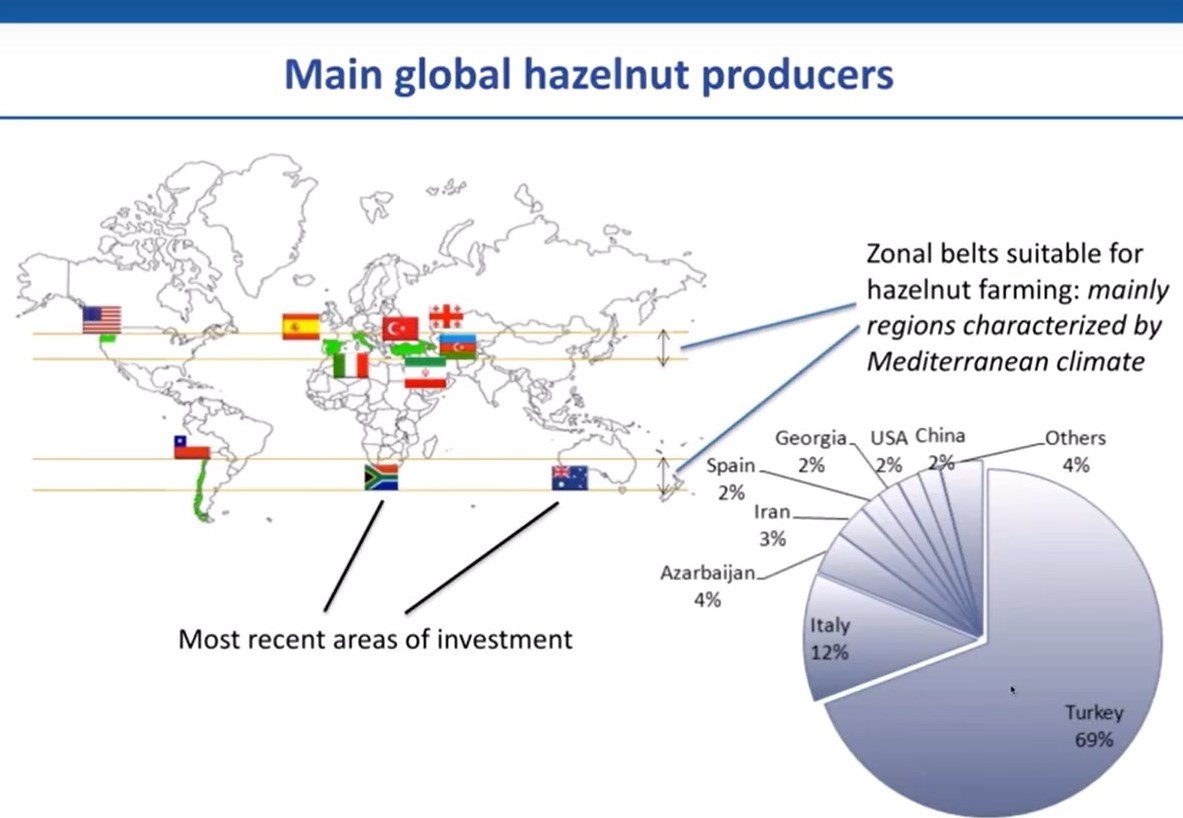
Cold spells can bring significant costs to agribusiness. Using sub-seasonal forecasts to predict extreme events 2-6 weeks in advance can bring an economic value up to 60% to the players of the hazelnut agribusiness. The results of a research by CMCC Foundation.
A weather forecast may not allow time to make decisions that minimize the economic impacts of an extreme event, while a seasonal forecast is not precise enough to predict it. Thus, a spring frost – an event that can affect a small area and that can occur in a very short time – can lead to significant economic damages for the agribusiness players.
Predicting a cold spell a few weeks in advance can allow sector players to optimize their economic choices, changing the purchase times of raw materials in the case of a buyer or adopting adaptation strategies in the case of a farm.
The paper “Multi-model subseasonal forecasts of spring cold spells: potential value for the hazelnut agribusiness” (Materia et al. 2020), just released on the journal Weather and Forecasting, is the result of a research on the topic led by CMCC Foundation.
“Our case study focuses on the production of hazelnuts in the coastal areas of Turkey facing the Black Sea, home of about 70% of global hazelnut production: since this area is exposed to cold spells, being able to anticipate the extreme events that can compromise the production in the region can have an effect on a global scale” explains Stefano Materia, main author of the paper and researcher at the Climate Simulation and Prediction Division of the CMCC Foundation. The research assesses the reliability of the sub-seasonal forecasts in this area and their consequent economic value for some actors in the sector.
“Today we have data that allow us to make sub-seasonal forecasts on a time scale that is longer than that of the weather (which has a time horizon of 10 days), although not as far from the event as that of the seasonal forecasts. We can make predictions up to 5-6 weeks in advance”, clarifies Dr. Materia.
We are seeing today the first applications of a new dataset made available to the international community from 2017, allowing to make predictions of impacts on civil society in a time scale of 30-45 days, which is of great interest to end-users.
The analysis, in addition to studying – thanks to a multi-model approach – the reliability of sub-seasonal forecasts for predicting frosts in advance, calculates their potential economic value for agribusiness players. “Predicting a cold spell a few weeks in advance can allow sector players that use hazelnuts as the main raw material of their products to change the time of purchase. In practical terms, they may start trading on nut price in advance, when the kernel is not even formed yet, on the basis of the forecast outcome. In the event of a predicted cold spell, they can fix the price beforehand, guaranteeing a net gain in case the cold spell occurs. In the same way, a farm will have the time to make adaptation interventions such as covering plants or install anti-frost turbine”, continues Stefano Materia. “As shown by our research, the potential forecast economic value is large for many users, who may benefit from the use of sub seasonal predictions compared to a no action strategy. The economic value of forecasts supplied two weeks before the expected event is around 60%, but even forecasts supplied 3 to 6 weeks in advance – that have poorer prediction skills – may result in up to 20% economic gain for agribusiness operators”.
For more information
Read the article – Materia, S., Á.G. Muñoz, M.C. Álvarez-Castro, S.J. Mason, F. Vitart, and S. Gualdi: Multi-model subseasonal forecasts of spring cold spells: potential value for the hazelnut agribusiness. Wea. Forecasting, https://doi.org/10.1175/WAF-D-19-0086.1
Watch the webinar – “Sub-seasonal forecasts of spring cold spells: potential benefits for the agribusiness”, given by Stefano Materia:



